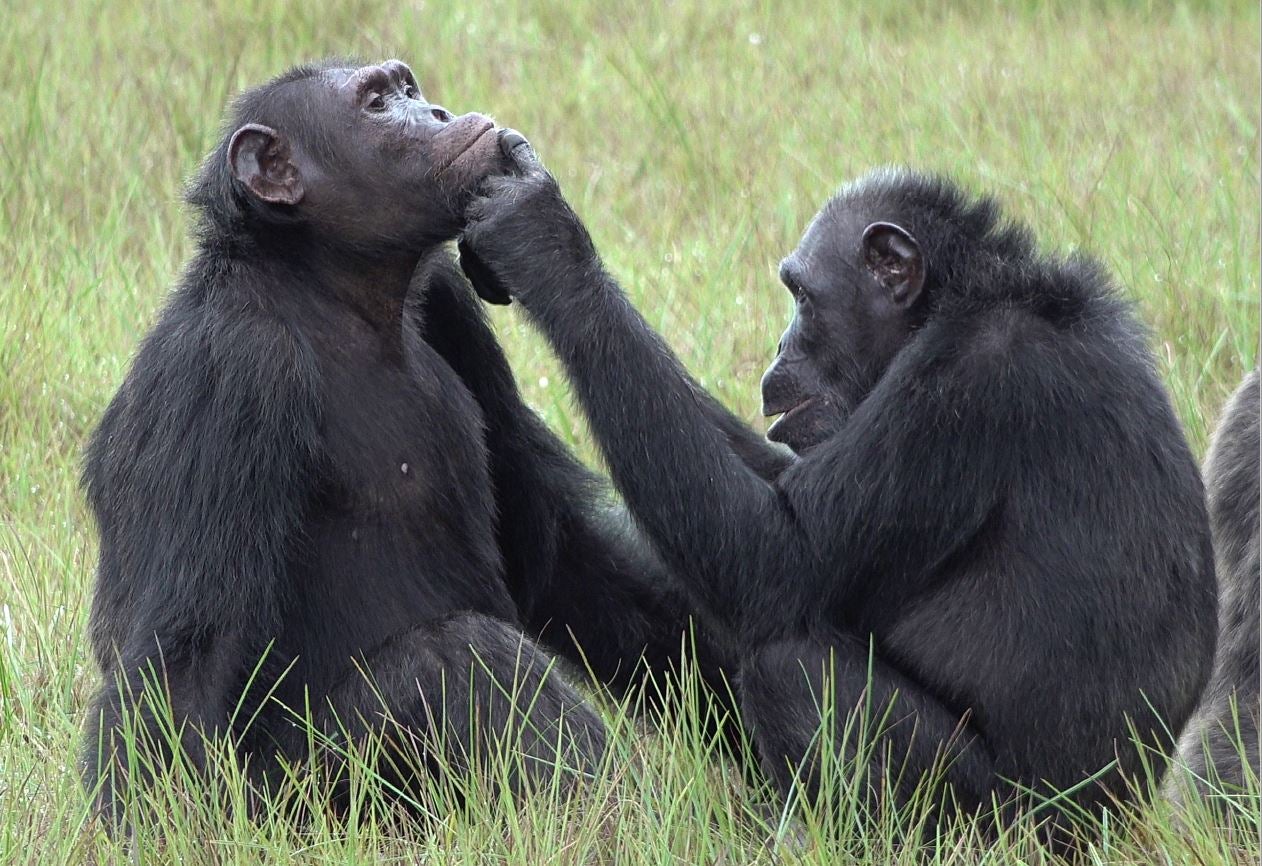Chimpanzees filmed applying treatments to wounds for first time
Medicine not just for humans and domesticated animals, as wild chimps appear to use treatments for injuries
Your support helps us to tell the story
From reproductive rights to climate change to Big Tech, The Independent is on the ground when the story is developing. Whether it's investigating the financials of Elon Musk's pro-Trump PAC or producing our latest documentary, 'The A Word', which shines a light on the American women fighting for reproductive rights, we know how important it is to parse out the facts from the messaging.
At such a critical moment in US history, we need reporters on the ground. Your donation allows us to keep sending journalists to speak to both sides of the story.
The Independent is trusted by Americans across the entire political spectrum. And unlike many other quality news outlets, we choose not to lock Americans out of our reporting and analysis with paywalls. We believe quality journalism should be available to everyone, paid for by those who can afford it.
Your support makes all the difference.Chimpanzees have been recorded applying insects to their wounds and to those of others for the first time, in what is thought to be a form of medical treatment.
Some species are known to self-medicate in various ways, such as dolphins getting high on puffer fish toxins, elephants eating certain leaves to induce labour, and dogs and cats ingesting grass to induce vomiting.
However, animals using specific treatments on other members of their species has not been seen before.
Scientists have said the behaviour, spotted in chimpanzees in Gabon, west Africa, shows a “prosocial behaviour” – actions which benefit other individuals and groups – which is closely associated with human empathy.
It was first seen by a volunteer at the Ozouga Chimpanzee Project, where wild chimps live in the Loango National Park, on the Atlantic coast of southwest Gabon.
Alessandra Mascaro observed a chimpanzee named Suzee inspecting a wound on the foot of her adolescent son, Sia. Suzee then caught an insect out of the air, put it in her mouth, took it out again and applied it to her son’s wound.
The researchers at the project said they have been studying this group of chimps for over seven years, but hadn’t witnessed behaviour like this before.
Ms Mascaro took a video of the interaction between mother and son and showed it to her supervisors, Tobias Deschner, a primatologist with the project, and Simone Pika, a cognitive biologist at Osnabrück University in Germany.
“In the video, you can see that Suzee is first looking at the foot of her son, and then it’s as if she is thinking, ‘What could I do?’ and then she looks up, sees the insect, and catches it for her son,’” said Ms Mascaro.
The team at the project then started to monitor the chimpanzees for this type of wound-tending behaviour, and documented 76 cases of the group applying insects to wounds on themselves and others over the next 15 months.
Professor Pika said the act of applying an insect to another’s wounds was a clear example of prosocial behaviour.
“This is, for me, especially breathtaking because so many people doubt prosocial abilities in other animals,” she said. “Suddenly we have a species where we really see individuals caring for others.”

The researchers said the team doesn’t know exactly which insects the chimpanzees are using or what their medicinal properties are.
“Humans use many species of insect as remedies against sickness – there have been studies showing that insects can have antibiotic, antiviral, and anthelmintic functions,” Professor Pika said.
The researchers have also suggested the insects might have soothing properties that could provide pain relief.
The team at the project now aims to identify the insects being used by the chimpanzees and to document who is applying insects to whom.
“Studying great apes in their natural environments is crucial to shed light on our own cognitive evolution,” said Dr Deschner. “We need to still put much more effort into studying and protecting them and also protecting their natural habitats.”
The research is published in the journal Current Biology.

Join our commenting forum
Join thought-provoking conversations, follow other Independent readers and see their replies
Comments